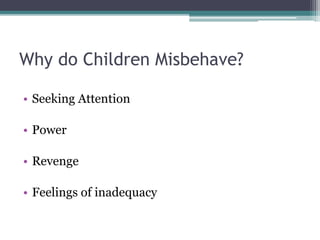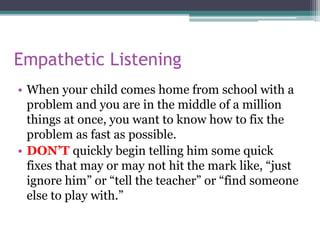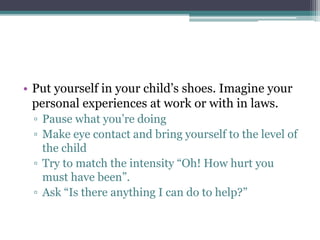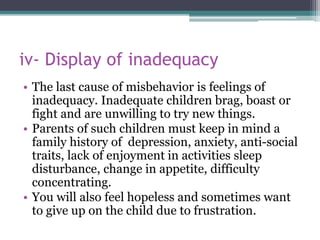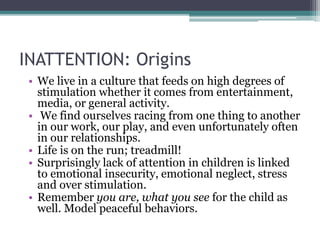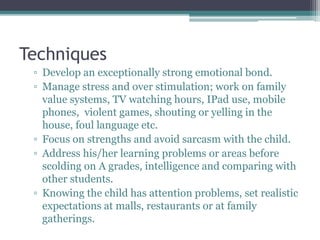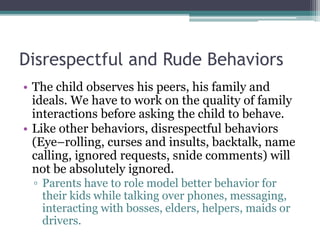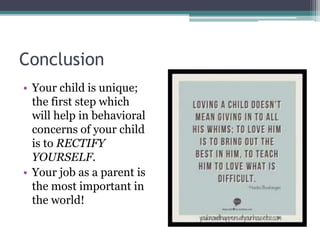This document discusses common behavioral problems in children and strategies for managing them. It covers issues like inattention, hyperactivity, aggression, defiance, and disrespect. The document emphasizes understanding the root causes of misbehavior like seeking attention, power, revenge or feelings of inadequacy. It provides techniques for dealing with different behaviors like ignoring attention-seeking behaviors, giving children choices to reduce power struggles, using positive affirmation to prevent revenge behaviors, and encouraging children's strengths to address inadequacy. The overall message is for parents to understand their child's perspective and model respectful behaviors themselves.









